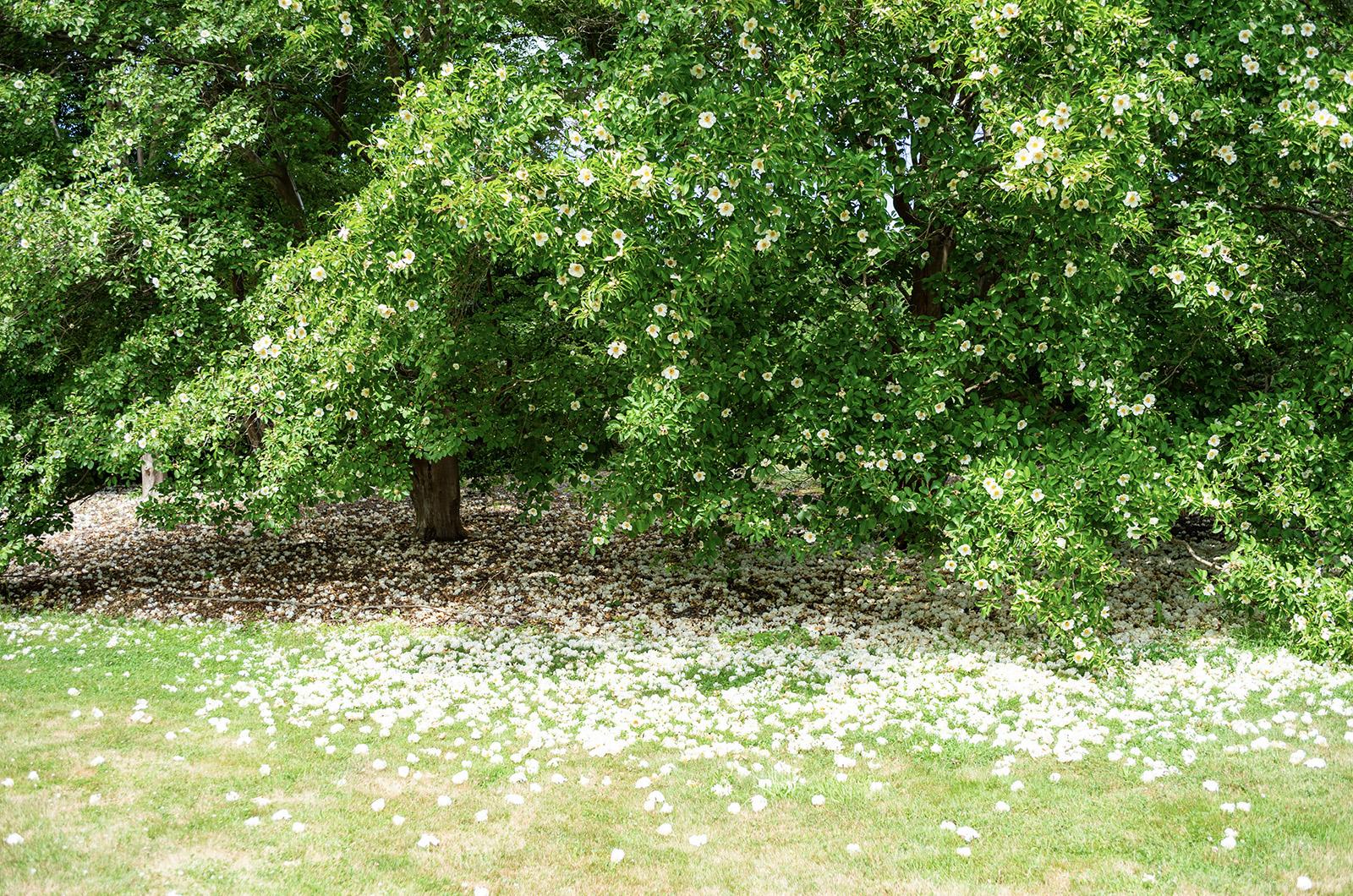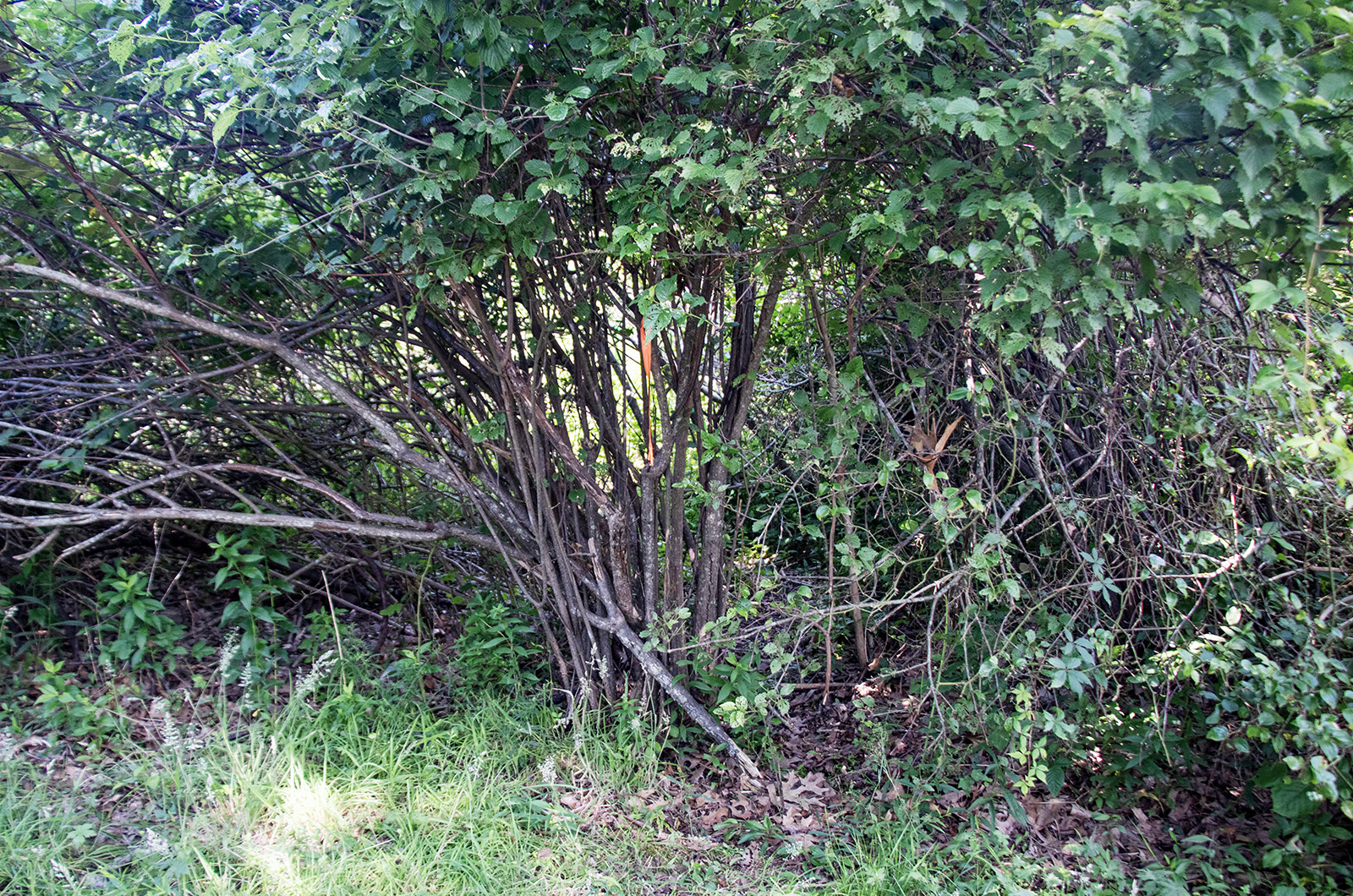In a steamy greenhouse in West Tisbury, in the warm aftermath of a summertime downpour, there are leaves, mostly green with hints of red, sparsely topping a collection of spindly stems.
These are stewartia, immature and of rare cultivars, being nurtured at Polly Hill Arboretum, now host to a world-class collection of these flowering trees. It was not an easily won distinction, arboretum director Tim Boland said, for the seeds of this family are notoriously difficult to work with.
“Seeds can take up to five years [to germinate],” he said “but we are kind of cracking the code on it.”
Mr. Boland, along with stewartia expert and collaborator Todd J. Rounsaville, recently authored a paper on the topic, the ambitiously named Taming the Wild Stewartia, to be presented at the next meeting of the International Dendrology Society.
These developments belong to the discipline of horticulture — the study of the cultivation of the hortus, the garden, and the plants therein. For thousands of years, since our hominid ancestors sowed their first seed, the horticultural
study of plant cultivation has mostly been conducted on the farm before the discipline was severed and developed into its own science. Indeed, Mr. Boland and Mr. Rounsaville’s recent paper harkens back to that ancient past, their taming of the wild stewartia analogous to those first farmers’ taming wild wheat, rice and maize.
Since their greenhouse and plant nursery were constructed back in 2007, Mr. Boland estimates that at least 50,000 Island native plant species have come through the facility for the arboretum, conservation properties and their annual plant sale. Non-native specimens account for thousands more.
The ethos of careful and prolific seed cultivation, Mr. Boland said, goes back to Polly Hill Arboretum’s eponymous founder.
“Polly predominantly grew from seeds, which is a very patient process,” he said. “During Polly’s time, she told me, she probably had 30 per cent success with plants.”
Thirty per cent would be a failing grade on a math test, but it is an exceptional rate of success for the horticulturist. The process of germinating and growing most seeds in a controlled environment is far more complex than simply sticking them in the dirt.
For each specimen, Mr. Boland said, “we have failed, multiple times,” but the assiduously-kept records of those failures are just as important as the successes. Many of the species they work with have no recorded procedure germination and growth, with the arboretum staff designing and recording it as they go.
In the case of Island native plants, the seeds must be collected in the wild (often in a race with the birds), cleaned and then placed in cold storage to mimic winter conditions before they germinate. Not all germinated seeds make it to full maturity, whether by disease or feebleness or even mammalian sabotage (all oak seedlings must be kept in a locked cage to deter squirrels looking for buried acorns), but enough do.
It is not only through seeds that plants can multiply; for other species, propagation is the way to go.
“It’s a kind of cloning,” Mr. Boland said, in which a stem cutting is taken from a plant, placed in soil and allowed to grow new roots, creating a genetically identical copy of the mother organism.
At the arboretum, Mr. Boland led this reporter through a propagation of my own, at a sanitized aluminum table that serves as their “propagation station.” From an immature oak sapling I used my scissors to snip off a twig and trim down the leaves. Then I dipped its end in rooting hormone and planted it in a little square nursery planter.
Propagation techniques have been critical in conservation efforts aimed at bolstering the most unique plant the Vineyard has to offer, the only one which exists on-Island and nowhere else: Crataegus schizophylla, otherwise known as cleft-leaved hawthorn.
The species once occurred elsewhere in New England, part of the suite of
“pioneer plants” which spread to reforest the old abandoned pasturelands, but as that forest succession has progressed elsewhere, it has nearly gone extinct.
Only around two-dozen remain on the Island, Mr. Boland said, and even those were in rough shape when they were surveyed some years ago.
“They had been completely enveloped by scrub oaks, so they started to kind of go south and tank because they need sun and they suffered from fungal flights. So that got us very worried,” he recalled.
Mr. Boland said the arboretum has since begun working with various conservation organizations on the Island to clear out the area around those trees and ensure their continued health, along with collecting wild seeds of the species.
They have also collaborated with the Arnold Arboretum in Boston to propagate new cleft-leaved hawthorns. Using a process known as “hot callus grafting,” the staff at Arnold were able to establish cuttings on rootstock from other hawthorns, using a hot-foam-and-pipe contraption to essentially cauterize the joint merging the organisms.
Mr. Boland said they now have 30 new specimens to distribute on conservation properties and in their own collection.
When I returned home from the arboretum that afternoon, my attention was drawn to my own backyard hawthorn, at my family’s home not too far from Sengecontacket. I had enacted my own conservation effort to save this tree, which was almost completely dominated by bittersweet when I first found it. It now thrives amidst our blackberry brambles and wild blueberries bushes. It occurred to me that I never determined what kind of hawthorn this was.
I snapped a picture of its leaves and posted it to iNaturalist, an application dedicated to recording species found in the wild for all the world to see, and thought little of it.
Then came July 16, my first day in Italy, which I will call home for the next year, when I was feeling just a little homesick. I got a text from my aunt back on the Vineyard. Two of the Island’s most illustrious plant naturalists, Margaret Curtin and Greg Palermo, had showed up to examine our tree.
They thought it was a cleft-leaved hawthorn.
“We’re just about certain that your tree is Crataegus schizophylla,” Mr. Palermo wrote, in an email after the fact.
The whole thing felt like a message to me from home, that even as I have left the Vineyard behind, for now, its plants, farms and especially its people will always be there with me, no matter how far I sojourn.
And at Polly Hill Arboretum, a little oak sapling reminds me, that as I write this article in my apartment in central Italy, a little piece of me is still growing back on the Island.








Comments (1)
Comments
Comment policy »